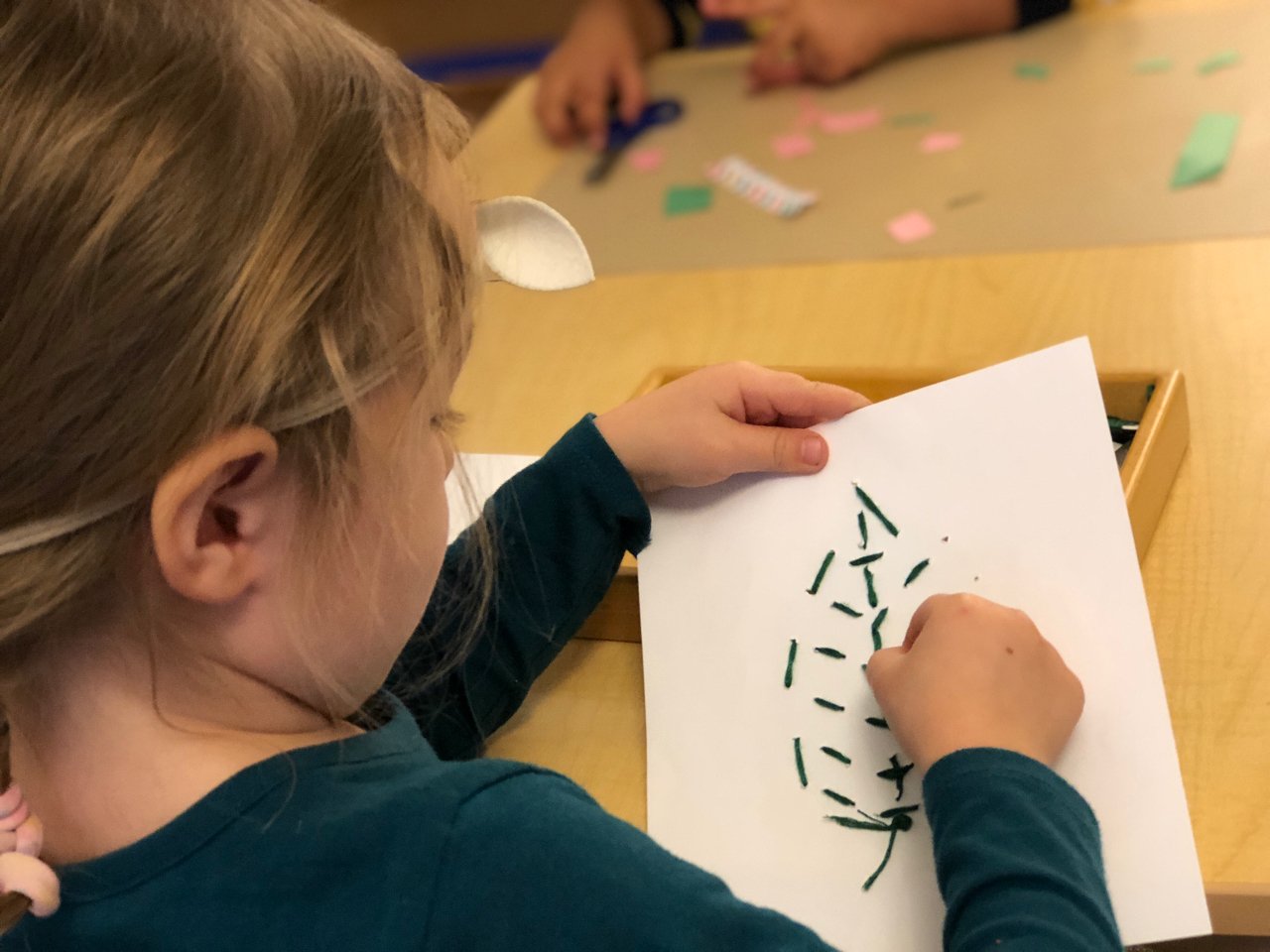 Sewing is becoming a popular activity in our Montessori studio. Knowing how to sew is a useful skill with lifelong practical applications and benefits. It requires concentration, focus, and problem solving, and helps develop hand-eye-coordination and fine motor skills. For these reasons, sewing falls under Practical Life activities in the Montessori curriculum. More specifically, sewing encourages children to care for themselves, meet their own needs, and foster functional independence. The goal is that one day a child notices there is a hole in his favorite socks, and follows up this observation with action—fixing it himself!
Sewing is becoming a popular activity in our Montessori studio. Knowing how to sew is a useful skill with lifelong practical applications and benefits. It requires concentration, focus, and problem solving, and helps develop hand-eye-coordination and fine motor skills. For these reasons, sewing falls under Practical Life activities in the Montessori curriculum. More specifically, sewing encourages children to care for themselves, meet their own needs, and foster functional independence. The goal is that one day a child notices there is a hole in his favorite socks, and follows up this observation with action—fixing it himself!
At the beginning of the year, we start with a variety of lacing tools, from simple beading to continuous lacing frames. When the child is ready, we introduce a blunt needle and thread and begin sewing on sturdy material, such as cardboard or cardstock, with premade holes. The trick is to follow the pattern and build muscle memory for basic stitching. From there, we introduce soft fabrics such as burlap and felt for a child to begin strengthening her hand by puncturing the holes independently and applying the movements she has been practicing.
This week, there are a variety of sewn mittens hanging on our display board outside the Montessori studio. Sewing also allows for children’s creativity to shine! The learners have fun picking fabric and deciding which color thread to use or which beads or buttons to add.
On cold, wintry days, this is a wonderful activity to replicate at home. Start sewing in your home with this great beginners board or these lacing frames. And check out Sewing in the Montessori Classroom for more information about the science behind sewing and projects for all ages.